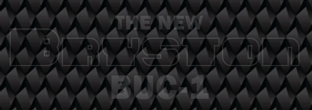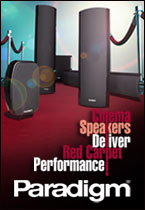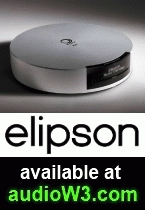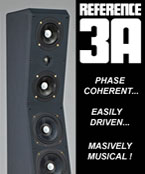
Some of us build home theatres in order to recreate the movie theatre experience at home. Some of us do it for bragging rights. Then there are enthusiasts who constantly upgrade their components in the attempt to reach ultimate home theatre nirvana. Whichever group you fit into, chances are that in your quest for components you will come across products from Paradigm Electronics and sister company Anthem Electronics. That’s because both brands have long been considered to be among the most reputable audio video brands – and not just in Canada, but around the world. Some of this success can be attributed to the fact that both brands have been around since the dawn of the home theatre and have continued to innovate and develop products that kept up with the times. Another part of this success stems from the fact that Paradigm manufacturers almost all the components required to build its speakers and audio video components – from crossovers right down to individual parts of a speaker driver such as cones and baskets. Of course, rave product reviews and a huge tally of awards collected over the years don’t hurt.
Speaker manufacturer Paradigm Electronics was founded in 1982 by Jerry VanderMarel and Scott Bagby in Toronto, Ontario and enjoyed a steady growth throughout the 1980s and 1990s. In 1998, the company acquired Sonic Frontiers Inc., a highly respected Ontario-based high-end audio component manufacturer of Anthem and Sonic Frontiers brands. Today Paradigm’s state of the art production facility, where most Paradigm and Anthem products are manufactured, is based in Mississauga, Ontario. This colossal facility is home to over 300 employees and occupies roughly 230,000 square feet. Paradigm also owns an Advanced Research Centre in Ottawa, Ontario which houses a team of 18 employees. Paradigm is Canada’s largest speaker manufacturer and ships its products to over 60 countries. Early in 2010, I was invited to a rare behind-the-scenes look at Paradigm’s Mississauga facility, guided by Mark Aling, Marketing Manager, and Rob Armstrong, National Sales Manager.
The Making of a Paradigm Loudspeaker
My tour began with a visit to the research and development department where naturally all new products are conceived. The team of engineers at the Mississauga facility is responsible for new speaker and crossover designs with the aid of a massive tool – also known as the anechoic chamber. The purpose of an anechoic chamber is to completely isolate all external noise and allow engineers to measure the sound of the speaker placed inside it. It is an indispensible tool in modern loudspeaker design. Paradigm’s anechoic chamber has a volume of 33,000 cubic feet with fiberglass wedges that are just over 8 feet long and glued to a concrete wall. A 6 inch air gap isolates the chamber from the rest of the facility. This anechoic chamber is basically a larger version of the one built years ago at the National Research Council (NRC) in Ottawa. Its larger size allows Paradigm to measure much lower frequencies (all the way down to 1 Hz) and with better accuracy. Two doors on opposite walls allow access into the anechoic chamber.

Outside each door is a computer workstation where measurements can be performed. Inside the chamber is a rotating speaker platform, controlled by the computers outside the room. A B&K calibrated microphone sits in the middle of the chamber at exactly three meters from the speaker platform. To evaluate a speaker’s performance, it is placed on the speaker platform inside the chamber, the doors are closed and the tests are initiated from a computer workstation. As the speaker rotates on the platform, Paradigm looks at three main windows: 0 to 15 degrees (direct, on-axis sound), 15 to 30 degrees (side wall followed by back wall reflections) and 30 to 45 degrees (first reflections). To measure a speaker, a series of test tones are played, similar to those that AV receivers produce when running an auto room calibration. The measurements are then translated into a frequency response curve on a computer screen – with the goal of achieving as flat of a frequency response as possible. The measuring software used here was custom designed by engineers at the Paradigm Advanced Research Centre in Ottawa. Aside from measuring speakers, the software also allows the engineers to design and match certain topologies of crossovers with various speaker designs. In addition to all this, the software allows Paradigm to compare its new designs with previous models as well as speakers from competitors. There’s no question that the anechoic chamber and custom software are really powerful tools and play a vital role in Paradigm’s speaker design.
If a prototype speaker design passes the anechoic chamber tests, it is put through a series of listening tests inside a double-blind screen listening room. Paradigm actually has two of these test rooms: one with metal stud construction and a drop ceiling, meant to emulate a store environment, and one constructed from wood studs and drywall to emulate a home setting. A double-blind environment means that a screen (similar to a speaker grille) is dropped in front of the speakers to take away the visual cues and prior knowledge of what you’re listening to. Both rooms are equipped to test speakers ranging from a typical bookshelf to in-walls, on-walls and ceiling designs. A speaker switch box allows for quick selection between various speakers. An SPL meter is used to match the volume of all the speakers being compared, to put them on an equal level playing ground. Paradigm also uses these listening rooms to test competitor speakers against its own. How was it determined that this was a good method for testing speakers? The basis of this test comes from the NRC study that Floyd Tool and Peter Schuck (now head engineer at Paradigm) participated in originally some years ago. The goal of this study was to develop measurable characteristics of a loudspeaker that most listeners enjoyed. The three resulting characteristics were determined to be off-axis response, flat mid-range and low distortion. This became the recipe for 95 percent of the population for what they enjoyed in a speaker.
When we stepped out on to the production floor, the scale of this manufacturing facility was put into perspective for the first time. This is a truly gigantic operation.

The production process begins with the manufacturing of the individual parts that make up a speaker. A tour of the injection molding department proved to me that Paradigm really makes their speakers completely from the ground up. The machines here are used to injection mold plastic parts such as speaker cones, surrounds, baskets, baffles, port tubes and other plastic parts that you might find in a speaker. Here’s how it works: raw plastic pellets enter the machine’s hopper and are fed through a heat chamber where they are converted to a liquid form. A network of “veins” directs the liquid plastic into a tooled-metal mold, where the part takes its shape. The tooled-metal mold of course has to come from somewhere for each part – and I was amazed to learn that Paradigm makes even these in-house, in its machine shop. To make the molds, Paradigm uses a state of the art machine that doesn’t make physical contact with the raw metal block (like other milling machines), instead the machine eats the metal away at the molecular level to create the shape of the mold. It may take several hours to produce a mold but once complete, the mold can be used to produce hundreds of thousands of the same part.
Armstrong mentioned that Paradigm is the only speaker company in the world to apply an over-mold technique in the manufacturing of some of its drivers. This technique is used to fuse together the surround to the cone. This eliminates the need for using glue and results in some of the most durable and hence reliable drivers on the market.
The other key components of a speaker driver including the voice coils and magnet structures are also built in this facility. Most of this work is done by hand, with the exception of the winding of the voice coils which is performed very accurately by a machine. Once all of the individual components are manufactured they are moved to the assembly area where the driver is assembled by hand.

By this point of the tour, I had already observed a few manufacturing techniques at work that I hadn’t seen before. And just when I thought it couldn’t get more interesting, we walked up to a 3D printer which Paradigm uses for advance prototyping. Engineers from the R&D department design three dimensional drawings and print them here in full 3D plastic composite. What’s really incredible about this printer is that it can print objects that consist of multiple parts, already assembled together. Aling showed me a few objects printed here: a fully-working set of gears, a working adjustable wrench and a hollow sphere with multiple openings which contained other spheres inside it. Printing such complex 3D objects is possible since the printer uses two different materials – one which makes up the 3D object and one which can be sprayed away after the printing is finished. This advanced prototyping technique can play a crucial role when designing new products.
After seeing the individual speaker parts being manufactured, it came as no surprise that Paradigm makes its crossover completely from scratch. The crossovers start out as an empty circuit board into which various electronic components are inserted – some by an automated machine and some by hand. The boards then pass through a machine which applies flux the bottom of the board and solders all the components. Once completed, every newly built crossover is tested against a reference crossover to ensure proper operation, before it is mounted into a speaker cabinet.

Amplifier boards for some of Paradigm’s latest subwoofer use tiny surface-mount electronic components for the most part and hence are built by a fully automated process. Here’s how this works: a large reel containing all the electronic components in a predetermined order is fed into a machine which removes each component and inserts it into the circuit board. The machine performs tens of insertions per minute with perfect accuracy. The electronic components come in a reel (automatically assembled by a separate machine). You guessed – even these reels are made right at this facility.
The final piece of the puzzle – the making of the speaker cabinet – takes up perhaps the largest amount of the production floor space. Stacks of giant wood boards come with the vinyl already laminated on it from a wood supplier just down the street from the Paradigm facility. The boards are first cut into small pieces called “sleeves” by a fully automated table saw. The size of the sleeves is determined by which speaker model is being manufactured. These smaller boards are then sent to a router, where various cuts and grooves are made. To complete the job, a machine applies glue and folds the cabinets giving them the finished shape.
Of course, it’s not a speaker until all of the components are assembled together. During the last stop of the production process, the baffles, drivers, tweeters, crossovers and dampening materials are assembled into the speaker cabinet. The speakers go through a final quality inspection and are then packaged.
The Making of an Anthem Component

As mentioned previously, all new speaker designs are handled by engineers at the Mississauga office. The Advanced Research Centre in Ottawa on the other hand is responsible for amplifier designs, audio and video circuit boards and programming code for subwoofer DSP processors. The Ottawa team also wrote the software for anechoic chamber testing and develops on-going software updates. Aling joked that the engineers at this location are constantly engaged in improving amplifier designs which results in a challenge for the speaker designers since they have to come up with designs that keep up with the new amplifier designs. Call it a healthy camaraderie between the offices, which results in some pretty outrageous designs. Take the new SUB 2 subwoofer for example – it has a 9000 watt amplifier and no less than six active drivers. To put this into perspective, in order to get maximum output from this subwoofer, you’ll need to connect it to a 240 volt outlet! Overkill for most? Yes. But the lessons learned from such designs trickle down into much smaller and more affordable subwoofer models that a much larger audience can enjoy.
The assembly of circuit boards for Anthem components takes place at the Mississauga facility. Since the surface-mount electronic components are very small, the insertion and soldering of these components is completely automated. As for the subwoofer circuit boards, the electronic components come from a pre-assembled reel. Again only some of the larger components are inserted by hand. The face plates for the components are cut very precisely by the same machine which makes the metal molds for injection molding. Once the circuit boards are assembled into the chassis (also made in-house), the various inputs/outputs of the boards are connected to a test jig which checks every function of the boards. When everything passes this stage, the component is moved to a burn-in rack where it sits plugged in overnight. The next morning the component is tested for the second time and then taken to a “UPS simulator” which is basically a shaking table. The component is then tested one last time and if it passes here, it goes off to packaging.

Final Thoughts
It is truly refreshing to see a giant like Paradigm thriving in Canada during a time when most audio video products are manufactured overseas. All Anthem components and nearly 90 percent of Paradigm speakers are manufactured locally at this facility. The remaining 10 percent that are made overseas include entry-level in-wall speakers, Cinema speaker packages and cabinets for the Studio and Signature speakers.
Having everything under one roof allows Paradigm to maintain a very high level of quality control and come to market with new products much quicker than other manufacturers. Although Aling joking noted that “Paradigm’s engineering is so state-of-the-art that often times we can’t come to market with products as quickly as the marketing department would like.” I personally don’t mind. Knowing that some of the top speakers and home theatre components are produced in our neck of the woods makes me extremely proud.
Click here to discuss this article on the CANADA HiFi Forum
Manufacturer Info:
Paradigm Electronics Inc.
www.paradigm.ca
Anthem Electronics
www.anthemav.com
Tel: (905) 564 - 1994
Click here to discuss this article on the CANADA HiFi Forum















